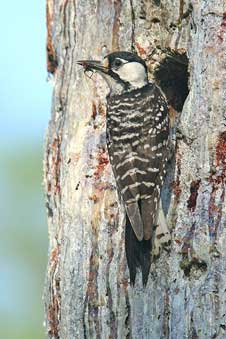 Every year, hurricanes and droughts wreak havoc on human lives and property around the world. And according to a pair of new NASA-funded studies, migratory birds also experience severe impacts to their habitats and populations from these events.
Every year, hurricanes and droughts wreak havoc on human lives and property around the world. And according to a pair of new NASA-funded studies, migratory birds also experience severe impacts to their habitats and populations from these events.While this may not seem like a revelation, the researchers were surprised to find that migratory bird species located as far as 60 miles (100 kilometers) from a hurricane’s path had experienced a long-term loss in population. Those populations took up to five years to rebound from the damage to their forest environments.
At the same time, researchers found that some migratory bird species could experience population losses as high as 13 percent when rainfall levels fall dramatically and cause drought in plains regions. The studies appear in the March edition of Global Change Biology.
"These studies suggest that whether a hurricane or a drought batters an area, migratory habits -- whether birds migrate south or stay put after breeding season -- are a strong predictor of how birds will fare," said Anna Pidgeon, an avian ecologist at the University of Wisconsin-Madison and a NASA-funded co-author of both studies.
"We believe changes in weather and climate are fundamental drivers of migration but, until now, we’ve known little of how changes in climate compel changes in migratory patterns," said Woody Turner, manager of the biodiversity program at NASA’s Headquarters in Washington. "The correlations don’t necessarily mean the environment alone is forcing migratory changes, but they offer a good place to start looking."
No comments:
Post a Comment